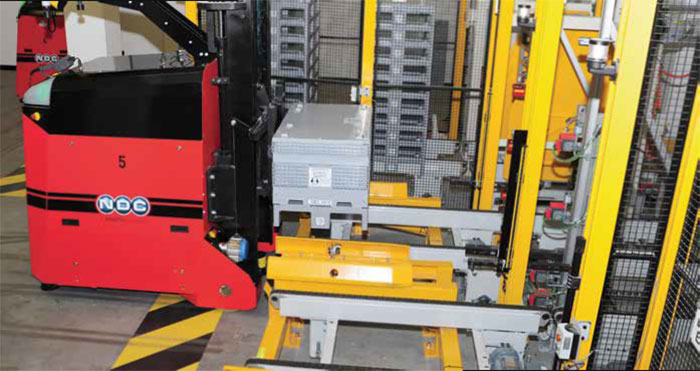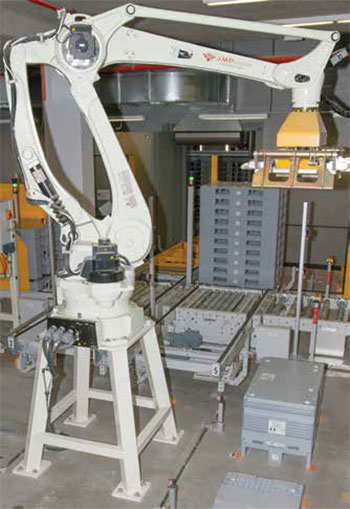Reserve Bank of Australia Annual Report – 2018 Management of the Reserve Bank
The Reserve Bank has a strong emphasis on efficiency and cost control, supported by a focus on continuous improvement and established budget processes. Technology plays a key role in the Bank's ongoing operations and forms a major component of a number of the Bank's strategic projects. Further significant progress was made on projects in 2017/18, with completion of the settlements infrastructure supporting the New Payments Platform (NPP) and enhancements to banknote logistics. Accordingly, project costs declined, although the Bank's general operating costs increased as a result of operating this new infrastructure.
Financial Management
The Executive Committee supports the Governor in overseeing the Reserve Bank's budget and the Investment Committee – comprised of a smaller group of senior executives, with the Deputy Governor as chair – oversees the Bank's portfolio of project work. The Investment Committee ensures spending on projects is prioritised to those that generate the most effective outcomes.
The Reserve Bank's costs arise from its ongoing activities associated with its key policy and operational responsibilities, and from its investment in strategic projects to support these responsibilities. Operating costs associated with the provision of banking and payments services are largely recouped through fee income for these services. Earnings arising from the Bank's investments in financial markets are detailed in the chapter on ‘Earnings, Distribution and Capital’.
The Reserve Bank's general operating costs, excluding depreciation, rose by 1.4 per cent in 2017/18. Staff costs continued to represent about two-thirds of the Bank's general operating expenses. The increase in costs reflected new operating costs associated with the implementation of major strategic projects. The delivery of the strategic initiatives in recent years led to a notable rise in depreciation, such that total costs for ongoing activities rose by about 5 per cent in 2017/18.
| 2013/14 | 2014/15 | 2015/16 | 2016/17(b) | 2017/18 | |
|---|---|---|---|---|---|
| Staff costs | 184.6 | 195.3 | 212.8 | 216.3 | 223.8 |
| Other costs | 66.0 | 65.7 | 71.9 | 88.3 | 85.2 |
| General operating costs (excluding depreciation) |
250.6 | 261.0 | 284.7 | 304.6 | 309.0 |
| Depreciation | 21.9 | 23.3 | 25.6 | 38.4 | 51.8 |
| General operating costs | 272.5 | 284.3 | 310.3 | 343.0 | 360.8 |
| Of which: | |||||
| Cost of projects | 18.4 | 28.0 | 34.9 | 43.7 | 35.0 |
|
(a) Excluding NPA and banknote management expenses, and costs directly linked with transaction-based revenue Source: RBA |
|||||
Total project-related costs declined during 2017/18, as several large projects that had begun in previous years were completed, including the settlements infrastructure supporting the NPP and delivery of an automated banknote storage and processing facility in the new National Banknote Site.
The Reserve Bank has an ongoing program of investment to maintain the value of its physical assets, including buildings, to ensure that services remain effective and resilient and that associated risks are managed appropriately. The extent of the Bank's investment in its strategic initiatives is reflected in its capital expenditure over recent years. Capital outlays declined by more than half in 2017/18, to $45.7 million. This expenditure was concentrated on completing the major initiatives noted above. With much of this work now having been completed, capital spending is expected to remain around this level in coming years, which is sufficient to maintain the Bank's core systems and infrastructure.
In 2016/17, the Reserve Bank commissioned an external review of its operations, to help gain assurance that those operations were being conducted in a way that is both appropriate and makes effective use of public money. 2017/18 saw the implementation of the recommendations, with the most significant being the creation of a shared services capability and centralisation of various support services, including selected finance, procurement and administrative functions. The Bank will work to improve the efficiency and effectiveness of these support services further over coming years.
The Reserve Bank engages consultants from time to time where it lacks specialist expertise or if independent research, review or assessment is required. Consultants are typically engaged to: investigate or diagnose a defined issue or problem; carry out defined reviews or evaluations; or provide independent advice or information to assist in the Bank's decision-making. Prior to engaging consultants, the Bank takes into account the skills and resources required for the task, the skills available internally and the cost-effectiveness of engaging external expertise. Spending on consultancies over the past eight years is shown below. As in previous years, consultancy support during 2017/18 covered a range of activities, with around one-third of spending related to the upgrade of Australia's banknotes and banknote-related infrastructure.
| 2010/11 | 102,000 |
|---|---|
| 2011/12 | 535,000 |
| 2012/13 | 1,190,000 |
| 2013/14 | 387,000 |
| 2014/15 | 773,000 |
| 2015/16 | 622,520 |
| 2016/17 | 987,388 |
| 2017/18 | 596,157 |
|
(a) Sum of individual consultancies that cost $10,000 or more Source: RBA |
|
| 2013/14 | 2014/15 | 2015/16 | 2016/17 | 2017/18 | |
|---|---|---|---|---|---|
| Capital costs | 44.2 | 56.5 | 108.1 | 100.7 | 45.7 |
| Of which: | |||||
| Cost of major projects(b) | 18.6 | 42.9 | 92.8 | 85.8 | 39.5 |
|
(a) Excluding NPA Source: RBA |
|||||


Information Technology Management
Many of the Reserve Bank's activities depend heavily on information technology (IT) systems and infrastructure. This includes more than 200 business applications, two highly available data centres and a highly resilient network infrastructure across multiple Bank sites.
As noted above, major projects in 2017/18 included completion and rollout of the NPP and its supporting Fast Settlement Service (FSS), and delivery of the automated banknote storage and processing facility in the new National Banknote Site. The Bank's PeopleSoft Financials platform was also upgraded and a new Bank-wide Learning Management System was implemented.
Work has also continued on the modernisation of the Reserve Bank's own banking platforms used to service its customers (the largest of which is the Australian Government), the transition to the Windows 10 desktop platform for all staff, and the development of the Bank's business intelligence platform.
Cyber security continues to be a key focus for the Reserve Bank and in 2017/18 significant resources were applied to further strengthen the Bank's cyber security capabilities. The Bank has been independently certified as complying to a mature standard with the cyber security strategies recommended by the Australian Signals Directorate for containing cyber threats, and will continue to build on its security controls as these strategies and standards evolve. The Bank has also attained certification of its internet gateway to the ISO 27001 global standard for Information Security Management.
With several major IT projects of recent years now largely complete, the IT function continues to transition to a steady-state model. This transition involves an uplift of steady-state capacity to accommodate the support and maintenance of the new applications introduced by these projects, and the addition of new capabilities to support the evolving nature of technology, including cyber security, cloud, big data and outsourcing. The Reserve Bank also continues to pursue strategies to ensure IT assets are highly resilient, fit for purpose, appropriately innovative and support workplace efficiency. These include investigating capabilities in the fields of blockchain and distributed ledger technologies, software-defined networks and machine learning.
Facilities and Environmental Management
The Reserve Bank owns premises in locations where there is a business need to do so. The Bank's facilities include the Head Office in Sydney; the H.C. Coombs Centre for Financial Studies in Kirribilli, Sydney; office buildings in Melbourne and Canberra; the note-printing facility and National Banknote Site at Craigieburn, north of Melbourne; and the Business Resumption Site in north-west Sydney. In addition to the buildings it owns, the Bank leases accommodation for its State Offices in Adelaide, Brisbane and Perth and for its offices in London, New York and Beijing. Independent valuers estimated that the value of the Bank's property assets increased by $72.4 million to $594.7 million in 2017/18, reflecting increased property values in Sydney and Melbourne.
Accommodation in the Reserve Bank's properties that is not required for its own business purposes is leased to external tenants. Net income from these leases amounted to $12.3 million in 2017/18, compared with $11.4 million in the previous year.
During the year in review, major projects included the commissioning of the facilities, security infrastructure and operational arrangements at the National Banknote Site, modernisation of the passenger and goods lifts at Head Office to improve reliability and performance, and upgrades to the fire safety systems at Head Office. The Reserve Bank also undertook a review of its property portfolio to ensure it remains appropriate for the purposes of the Bank. Following the commencement of operations at the National Banknote Site in late 2017, the Bank's building at 60 Collins Street, Melbourne, was no longer needed to store and distribute banknotes. Accordingly, a decision was made to sell this building and that process has commenced. The Bank is also planning building works at its Head Office at 65 Martin Place, Sydney, and the H.C. Coombs Centre for Financial Studies in Kirribilli, Sydney. These works are aimed at upgrading base building infrastructure that is at end of life and ensuring a safe, efficient and effective workplace to meet the long-term needs of the Bank, while preserving heritage features.
The Reserve Bank is committed to improving the environmental performance of its operations. The Bank has developed policies that are consistent with the principles of ecologically sustainable development as set out in the Environment Protection and Biodiversity Conservation Act 1999. These policies serve to reduce the impact of the Bank's operations on the environment and include initiatives to:
- reduce energy, water and paper consumption
- increase the recycling of paper, co-mingled waste and printer cartridges
- adopt environmentally sustainable office fit-out designs
- implement sustainability measures such as use of 50/50 recycled paper and biodegradable takeaway coffee cups in the staff cafeteria
- increase the use of fuel-efficient vehicles.
Specific improvements to the performance of the infrastructure of the Reserve Bank's buildings in 2017/18 included:
- implementation of an integrated energy metering and data monitoring system to measure overall energy consumption across specific buildings, enabling the Bank to optimise its energy use
- ongoing data centre load monitoring and balancing at the Business Resumption Site and Head Office to reduce electricity consumption
- implementation of LED lighting on a progressive basis across all sites and reductions in the use of artificial lighting, reducing electricity consumption for lighting needs
- improved performance of heating systems at each site, including a hot water system upgrade at Head Office, to reduce gas consumption.
In addition, the Reserve Bank is developing plans for increased use of renewable energy (solar power) at its sites.
Electricity consumption at all Reserve Bank-operated sites increased by 3.29 per cent in 2017/18, compared with average consumption over the preceding five years. This reflects higher usage associated with a full year of operations at the National Banknote Site and increased loads in the Bank's data centres as a result of new systems coming into operation. Gas consumption in 2017/18 declined by 9.36 per cent compared with the previous year, as a result of optimising the heating systems and upgrades to domestic hot water systems. Water consumption in 2017/18 was 1.9 per cent higher than in the previous year, reflecting the additional usage for the National Banknote Site.